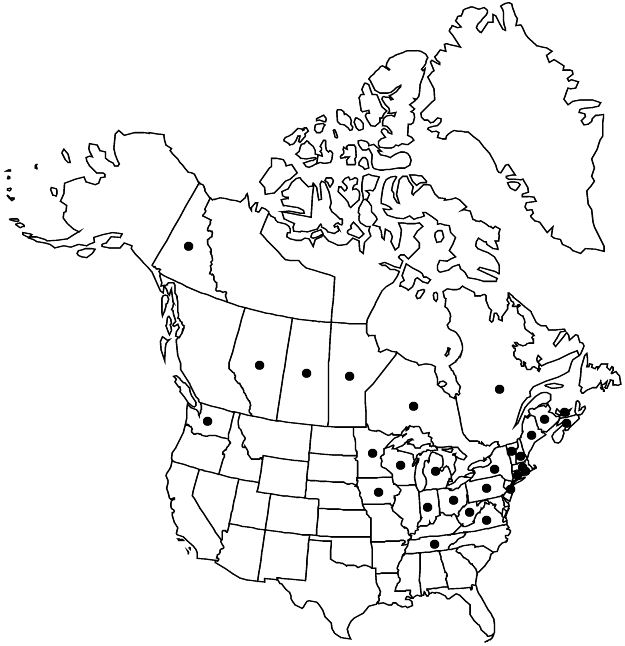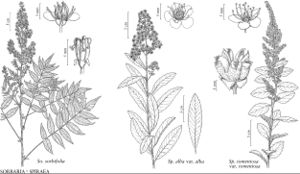Sorbaria sorbifolia
in P. F. A. Ascherson, Fl. Brandenburg 1: 177. 1860.
Plants 10–30 dm. Leaves: blade 14–30 × 5–17 cm; leaflets (9–)11–21(–29), oblong-ovate to elliptic, (25–)35–75(–95) × (8–)12–20(–25) mm, abaxial surface glabrous or ± sparsely stipitate-stellate, adaxial with some simple hairs near margins, otherwise glabrous. Inflorescences (7–)10–15(–34) × (3–)4–7(–14) cm. Pedicels (and axes) usually puberulent, stipitate-glandular, less often stipitate-stellate. Flowers 10–14 mm diam. (anther tip to tip); hypanthium puberulent, hirtellous, stellate, or glabrous; sepals ovate to oblong-ovate, margins often glandular-serrate; petals ovate to orbiculate, 2.7–4.3 × 2.1–3.4 mm; stamens 20–35[–50], 2–6.5 mm (of variable length); ovaries sericeous, styles 1.3–3.5 mm. Follicles 4.5–6 mm, sericeous. 2n = 36.
Phenology: Flowering Jun–Jul.
Habitat: Roadsides, old fields, waste areas, overgrown forest margins
Elevation: 10–500 m
Distribution

Introduced; Alta., Man., N.B., N.S., Ont., P.E.I., Que., Sask., Yukon, Conn., Ind., Iowa, Maine, Mass., Mich., Minn., N.H., N.J., N.Y., Ohio, Pa., R.I., Tenn., Vt., Va., Wash., W.Va., Wis., Asia (n China, Japan, Korea, Manchuria, e Siberia), introduced also in Europe.
Discussion
Sorbaria sorbifolia is cultivated in North America and Europe. The plants are always colonial and are capable of becoming adventive.
Selected References
None.
